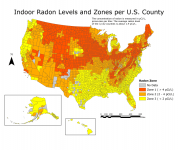blackchipjim
Full Member
- Dec 25, 2016
- 213
- 194
- Detector(s) used
- bounty hunter time ranger
- Primary Interest:
- All Treasure Hunting
Good evening to all, I have yet another question on quest for gold deposits. Is there any concerns about radioactive areas that you may encounter in the field? I am aware of the desert fever a person can encounter in process of inhaling the dust of the desert while prospecting. I have a few areas that I might prospect that have uranium listed as a possible mineral. I wonder if there is a way of detecting it other than a gieger counter or am i out of line on this subject. Thanks
Amazon Forum Fav 👍
Upvote
0









